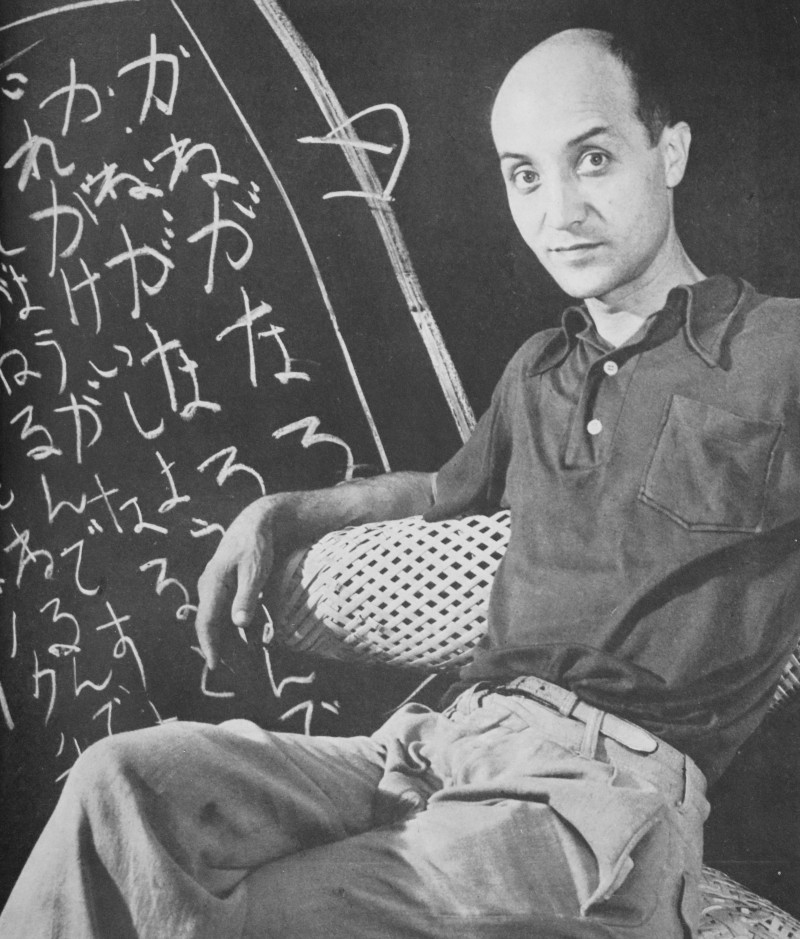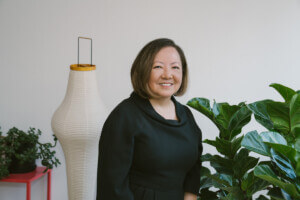Floor Frame, a 1962 bronze sculpture by the late Japanese-American artist, landscape architect, and political activist Isamu Noguchi was unveiled this past Friday afternoon on the recently overhauled grounds of the White House Rose Garden. Installed at the east terrace of the Rose Garden, the sculpture was selected by First Lady Melania Trump and acquired by the White House Historical Association this spring for $125,000 at a Sotheby’s auction. The Association then bestowed the sculpture, now part of the expansive White House Collection of fine and decorative art, as a gift to the White House in March. Notably, the acquisition marks the first time that the work of an Asian-American artist has been included in the White House Collection.
As detailed in a White House press release, Noguchi, who was born in Los Angeles and died in 1988 at the age of 84, viewed Floor Frame “as the intersection of a tree and the ground, taking on the qualities of both an implied root system and the canopy of a tree.”
“In order to reconnect viewers to the planet, he envisioned the sculpture placed directly on the ground,” reads the White House statement. “The sculpture placement on the terrace in the Rose Garden allows visitors to happen upon it, giving it a found quality. While powerful in its own right, Floor Frame is humble in scale, and compliments the authority of the Oval Office.”
“This sculpture not only showcases diversity within our Nation’s finest art but it also highlights the beautiful contributions of Asian American artists to the landscape of our country,” added Melania Trump.
While no doubt a worthy addition to the White House Collection that should rightly be celebrated, the unveiling of Floor Frame comes at an unprecedented moment in history in which the current inhabitant of the White House, Donald Trump, has failed to signal that he will be vacating the premises in January after losing the 2020 presidential election earlier this month to former Vice President Joe Biden. What would normally be a smooth and peaceful transitional period in which the outgoing administration hands over the proverbial keys to the new one has devolved into something else entirely. (The White House Historical Association, founded in 1961 by First Lady Jacqueline Kennedy, operates as a private nonprofit organization.)
“Unfortunately it comes at a complicated moment,” Brett Littman, director of the Isamu Noguchi Foundation and Garden Museum in Long Island City, Queens, told the New York Times following the unveiling. “But the key for us is that this will be on display in perpetuity at the White House. Administrations come and go, but artwork remains. We do feel proud, and we think Noguchi would feel proud as well.”
The Times went on to note that Trump has often failed to outright condemn the internment of Japanese Americans during World War II as his predecessors have. Noguchi lived at the Poston War Relocation Camp in Yuma, Arizona, for several months as a voluntary internee in 1942, an experience that had a profound influence on his later work and activism.

Trump aside, the White House Historical Association is marking the unveiling of Floor Frame with a complementary web initiative, “Diversity in White House Art,” that highlights the (growing) gender and ethnic diversity of artists represented in the White House Collection including Jacob Lawrence, Simmie Knox, Henry Ossawa Tanner, Greta Kempton, and Georgia O’Keeffe. During the Obama administration, former First Lady Michelle Obama acquired an Alma Thomas painting, which was the first work by a Black woman artist to enter the collection.
“The art of the White House should showcase the very best of American artists, and that means curating a collection that reflects the full diversity of our nation’s artistic heritage” said Stewart McLaurin, president of the White House Historical Association, in a statement. “Noguchi’s inclusion in the White House Collection is a worthy testament to his incredible life’s work and is a milestone in our efforts to ensure that Americans from all cultural backgrounds are represented.”
On December 1, the Association will host a virtual program that celebrates the life and work of Noguchi while also spotlighting the “importance of having diverse artists represented in the White House Collection.” The program, free and open to the public, will be divided into two panels. The second panel, hosted by the Japan Society, will focus on the legacy of Noguchi and the new sculpture gracing the White House grounds.











